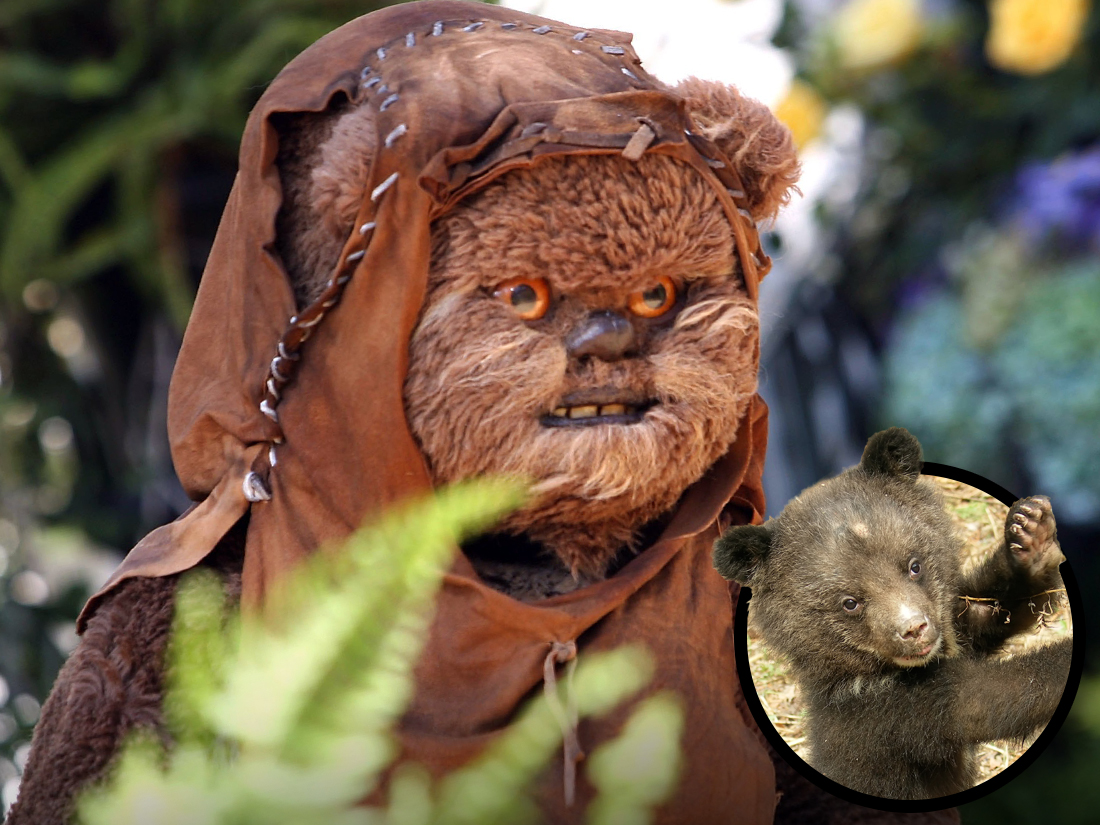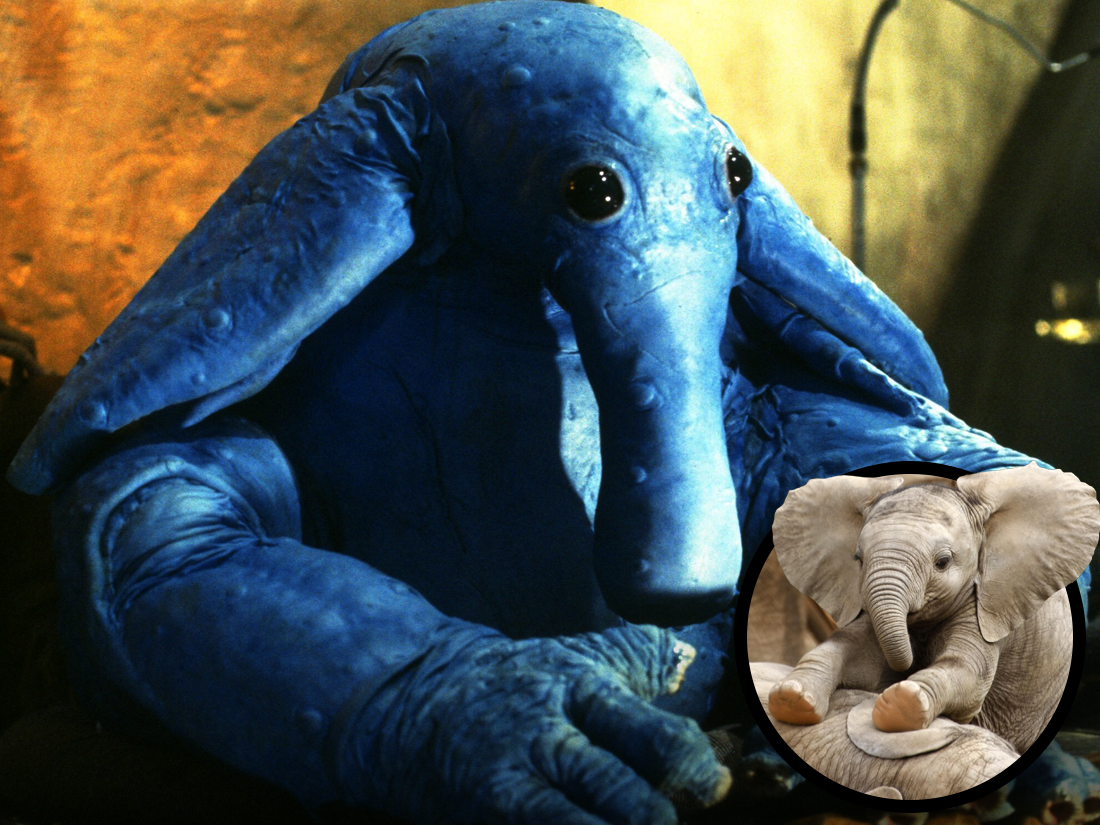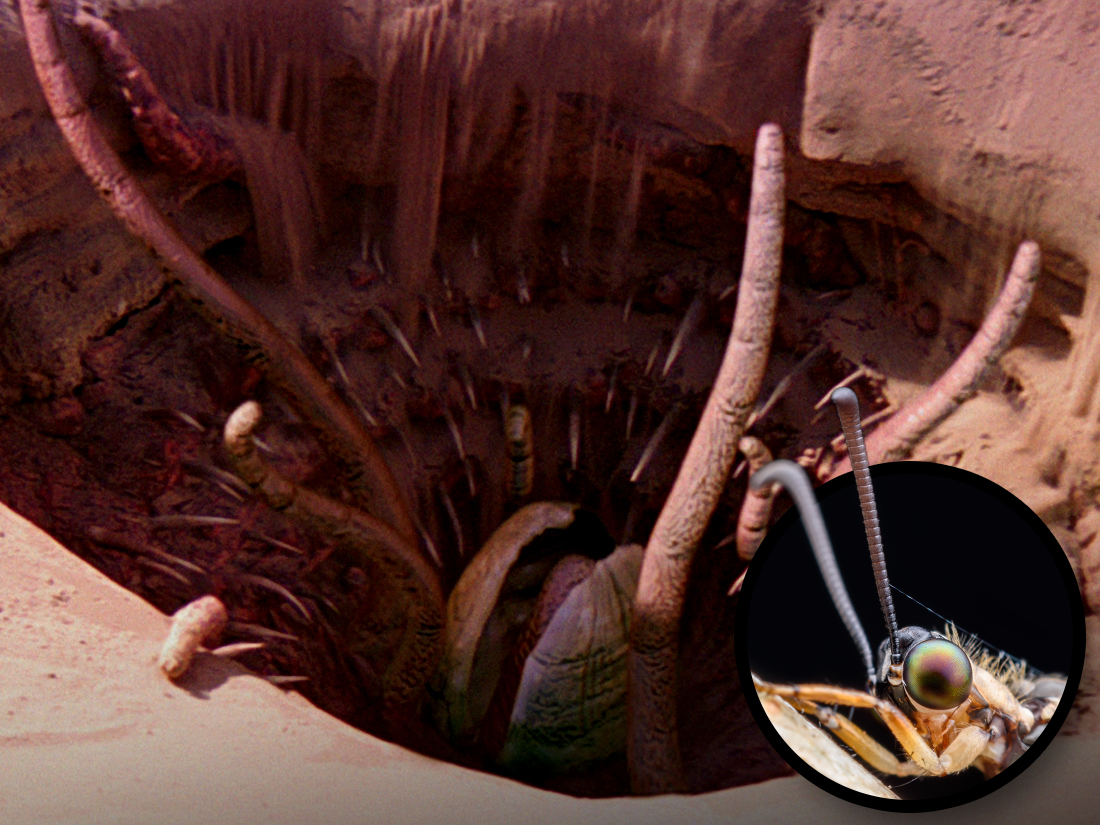Chewbacca to Jabba the Hutt: 10 Real 'Star Wars' Beasts in the Animal Kingdom
Wookies to sarlacc

Chalk it up to parallel evolution in a galaxy far, far away. As weird and wonderful as Star Wars' menagerie of multi-species aliens and exotic xeno-fauna appear, few are as implausible as they might seem at first blush. As a matter of fact, several of those beasties have real-life counterparts on Earth, albeit with inflated, misshapen or stylized proportions. From Wookies to the sarlacc in the Pit of Carkoon, here are 10 creatures you might recognize in the here and now.
Wookie

Wookies may appear like big, hairy Sasquatches, but the ambulatory shag carpets can trace their lineage to man's best friend. George Lucas would later claim, in fact, that he based the character of Chewbacca on his own dog, an Alaskan Malamute called Indiana who would later inspire another Lucas creation.
"A very sweet dog, she would always sit next to me when I was writing," Lucas once said. "And when I'd drive around, she'd sit in the front seat. A Malamute is a very large dog —like 130 pounds and bigger than a human being and very long-haired."
Han Solo's hirsute co-pilot also bears no small resemblance to the orangutan, a great ape found in the rainforests of Borneo and Sumatra in Indonesia. Researchers from Durham University taught an orangutan named Rocky how to manipulate his vocal chords the way people do. The term they used for these human-like vocalizations? "Wookies."
Dewback

Native to Luke Skywalker's home planet of Tatooine, dewbacks are massive, thick-hided reptiles that locals employ as a means of conveyance across the hot desert sands. Slow, lumbering, but hardy despite the searing oppressiveness of Tatooine's twin suns, dewbacks share a number of traits with Indonesia's Komodo dragon.
Though diminutive in comparison, Komodo dragons are the largest living species of lizard, sometimes reaching lengths of up to 10 feet (3 meters). Like dewbacks, Komodo dragons are four-footed, long-tailed and have a yen for arid environments. They also both possess flicking tongues: dewbacks for licking beads of morning dew from their backs — a behavior that gives them their name — and Komodo dragons to help them process airborne stimuli.
Ewok

If you picture Ewoks as miniature Wookies, you're onto something. "Ewok" almost sounds like "Wookie" in reverse, and George Lucas himself said that he designed the Endorian hunter-gatherers with another family dog in mind, this time a Griffon Bruxellois.
Get the world’s most fascinating discoveries delivered straight to your inbox.
With their rounded ears, flat noses, and furry countenance, Ewoks instantly recall teddy bears. The popular toys, originally known as Teddy's bears, got their name from President Theodore Roosevelt, who famously refused to shoot an American black bear that his attendants had trounced and tied to a tree on a hunting trip in 1902.
Shaak

Roaming the grasslands of Naboo, shaaks are essentially the planet's equivalent of grazing herbivores like sheep and cows. (Similar to our Earth-bound ungulates, they also tend to move in packs.)
Besides their tapir-esque snouts, the critters are characterized by ovoid girths not unlike those of engorged ticks, except that shaaks are are bulbous with blubber rather than blood. But while ticks prefer their habitats hot and humid, shaaks avoid the damp when they can. Despite the natural buoyancy that their stores of fat confer, shaaks have weak, spindly legs that are rather useless in water.
Varactyl

Varactyls, also known as dragonmounts, are mammoth herbivores native to the Outer Rim planet Utapau. They are part bird, part reptile. Capable of scaling walls, thanks to microscopic hairs on their gecko-like feet, varactyls possess both scales and plumage, much like some current depictions of dinosaurs.
For a more extant analog for the animals, we can look to the iguana, a genus of omnivorous lizards with almost equally impressive spiny crests and tails. Unlike varactyls, however, they make poor steeds for humans. Found in the tropical climes of Central America, South America and the Caribbean, iguanas top out at roughly 5 to 6 feet (under 2 meters).
Bantha

Indigenous to Tatooine, banthas bring together the immensity of woolly mammoths, the dense coats of wild and domesticated yaks, and the sweeping headgear found on bighorn rams.
Tusken Raiders, colloquially known as the Sand People, use the gargantuan pack animals as beasts of burden. You have to wonder about all that hair, though. As vital to survival as those locks may be in the Himalayas, where yaks are bred for milk, meat and transport, they're a curious attribute to have on a planet that's roasted daily by binary suns.
Exogorth

When the "Millennium Falcon" attempted to shake off a fleet of TIE fighters by hiding in a crater of an asteroid, that "crater" turned out to be the maw of a giant space slug known as an exogorth.
Exogorths are silicon-based life-forms that survive in the vacuum of space by feeding on asteroid minerals, stellar energy fields and wayward ships. They share their instinct for burrowing with Earth's moray eels, which create their marine lairs by secreting a mucus that coagulates the sand around them.
As with exogorths, morays possess a vicious set of hooked teeth. They reportedly don't take kindly to being disturbed in their burrows, either. Even at the maximum recorded length of 13 feet (3 meters), however, morays are unlikely to swallow you whole.
Hutt

What are Hutts if not oversized slugs with arms? Thick, blobby and bereft of feet, the corpulent criminal masterminds maneuver themselves by gliding along their flat bottoms, perhaps aided by the layer of mucus and oils that coats their skin. This slick surface also serves as the Hutts' greatest protection, shielding them from chemical burns and heat and making them difficult for enemies to gain purchase.
Akin to slugs, Hutts are hermaphrodites, possessing both male and female reproductive organs. Slugs are mainly composed of water, which makes them vulnerable to desiccation. Hutts, on the other hand, appear to consist mostly of muscle, blubber and an insatiable lust for indentured servitude.
Ortolan

Ortolans, most notably Max Rebo, leader of the Max Rebo Band of musicians at Jabba the Hutt's palace, appear very much like dumpy blue-skinned, bipedal elephants. Their most defining features are their large floppy ears, beady eyes and trunk-like schnozz.
Unlike elephants, Ortolans don't manipulate objects with their trunks. While Earth's pachyderms have been known to pick up a paintbrush or two, Max Rebo prefers an instrument dubbed the red ball jett organ, which he coaxes music from with his feet.
Sarlacc

Next to having his prisoners go mano a mano with the Rancor, Jabba the Hutt's favorite means of execution is the Pit of Carkoon, a vast chasm in the middle of Tatooine's shifting Dune Sea. No ordinary hole in the ground, it's also the home of the sarlacc, a tentacled, carnivorous behemoth with parallels to the terrestrial antlion.
Antlions are insects that live in a variety of environments, although most prefer dry and sandy habitats, where their larvae can excavate steep, conical traps. Once they are lodged in their burrows, all that remains visible of the larvae are their large, sickle-like jaws, which lie in wait for hapless ants to tumble into. Like sarlaccs, antlions inject their prey with a paralyzing neurotoxin before proceeding to digestion. Lucky for its victims, this order of business takes far less time than the sarlacc's fabled millennia.


